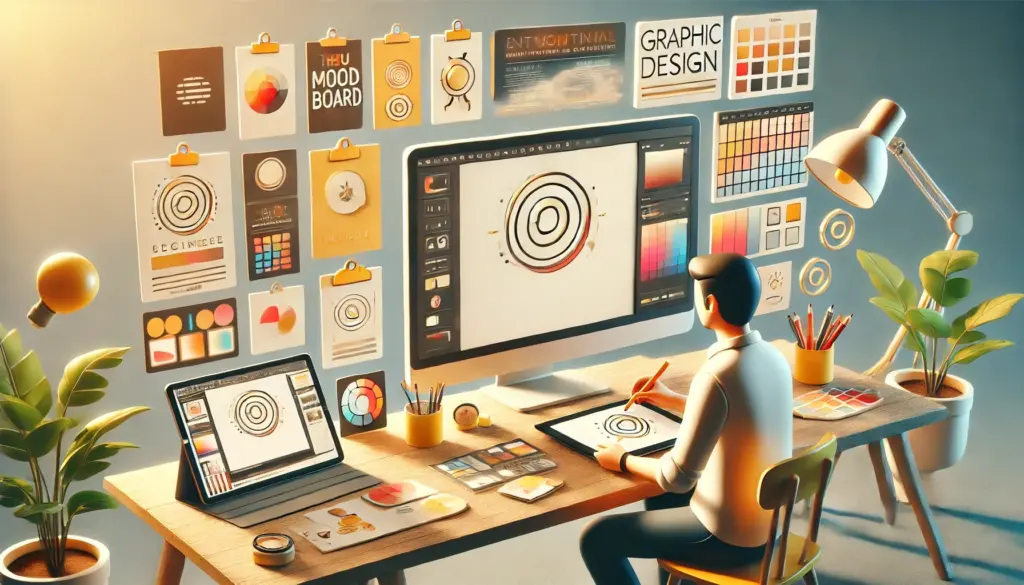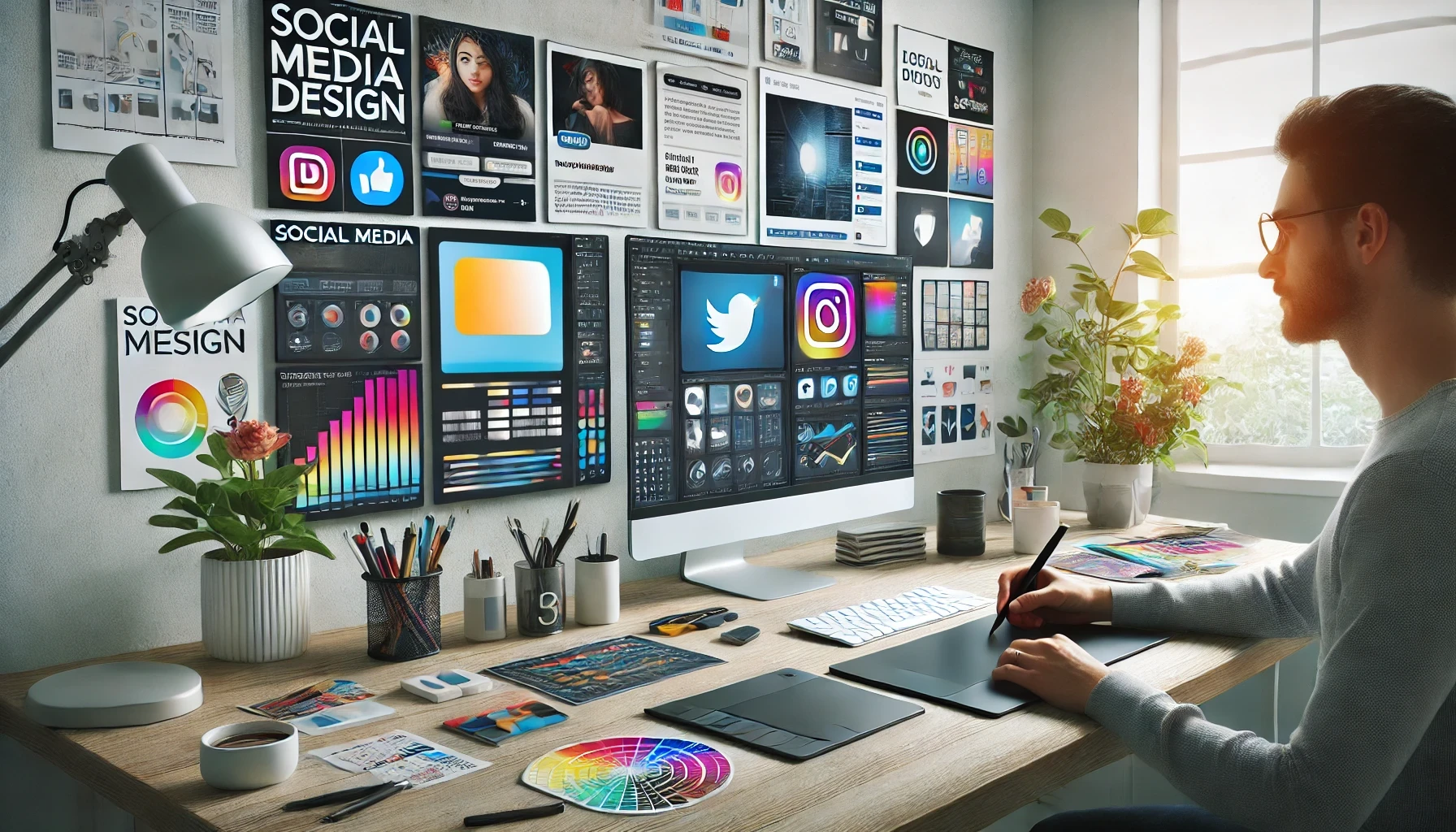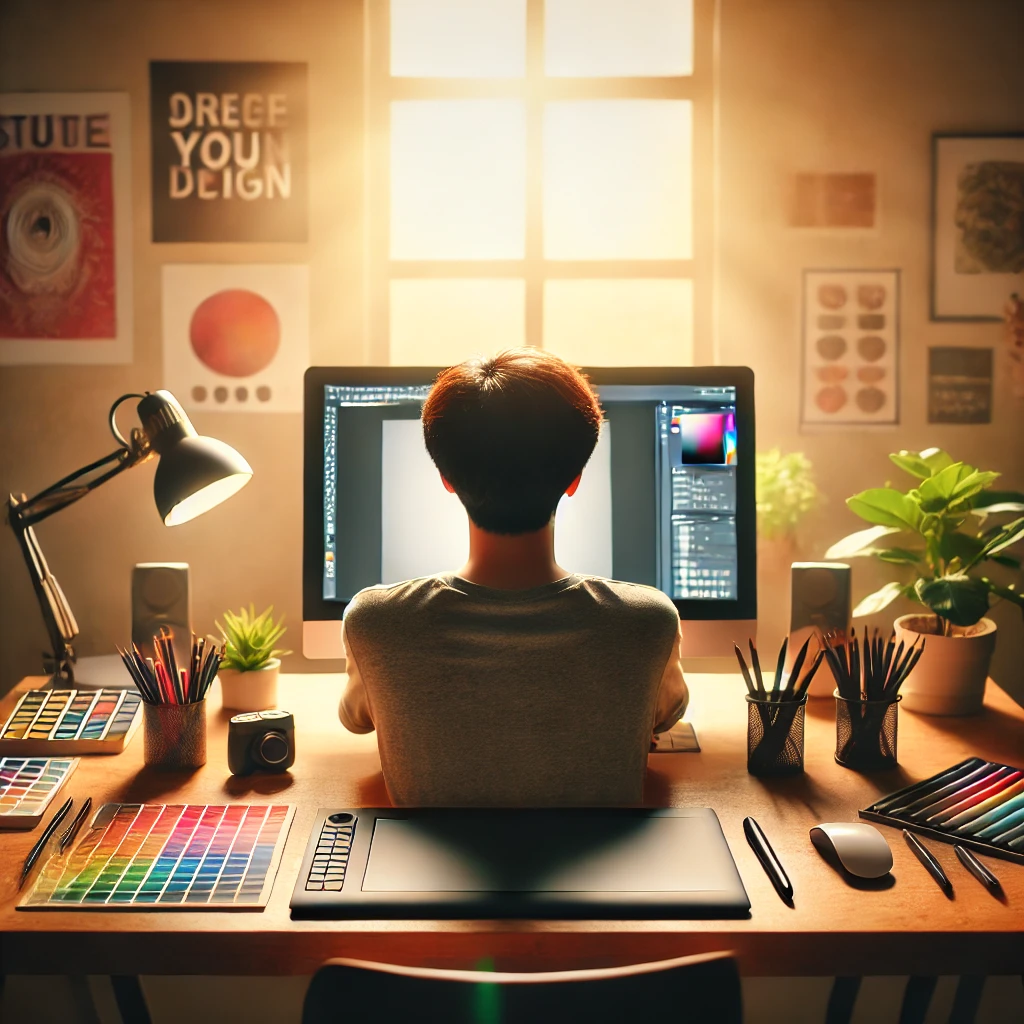Graphic design can feel like a daunting world, especially for beginners staring at a blank canvas and an overwhelming array of tools. Whether you’re dreaming of crafting stunning logos, eye-catching social media graphics, or professional layouts, the journey often starts with the same question: Where do I begin?
Many aspiring designers struggle to navigate the overwhelming number of tools, techniques, and principles. They may find their first designs cluttered or unpolished, wondering how to turn their creative ideas into professional-quality visuals.
That’s why Classroom Encounters is here to bridge that gap. By breaking down essential graphic design techniques into manageable steps, we’ll help you build confidence, unleash your creativity, and start creating designs that stand out.
From understanding core principles like colour theory and typography to learning beginner-friendly tricks, you’ll walk away with the practical skills needed to transform your ideas into impactful visuals.
Understanding Graphic Design Basics
What is Graphic Design?
Graphic design is the art of visual communication. It combines images, typography, and layout to convey messages, evoke emotions, and solve problems creatively. From branding and marketing to digital media, graphic design plays a pivotal role in shaping how we interact with the world.
Essential Tools for Beginners
Mastering graphic design starts with using the right tools. Here are some beginner-friendly options to consider:
- Adobe Photoshop: For photo editing and image manipulation.
- Adobe Illustrator: Ideal for creating vector-based designs like logos and illustrations.
- Canva: A simple tool for beginners to create social media graphics and presentations.
- Figma: Perfect for UI/UX design and prototyping.
Quick Tip: Start by experimenting with free versions or trials to determine which tool fits your needs best.
Core Graphic Design Principles
Typography Basics
Typography is the backbone of any design, serving both functional and aesthetic purposes. Here are practical tips to improve your typography skills:
- Pairing Fonts Effectively: Combine contrasting fonts, like serif and sans-serif, to create visual interest. For instance, use a bold serif font for headlines and a clean sans-serif for body text.
- Prioritising Readability: Ensure text is legible by maintaining appropriate spacing. Adjust kerning (space between letters) and leading (space between lines) to enhance clarity.
- Using Hierarchy in Typography: Establish a clear text hierarchy with varying font sizes and weights.
For example, consider a business card. Use a bold font for the name, a clean sans-serif font for contact information, and subtle kerning adjustments for alignment. This ensures both professionalism and visual appeal.
Visual Hierarchy
Use size, contrast, and spacing strategically to guide the viewer’s eye. For example, in a poster design, a bold headline grabs attention, while smaller text provides supporting details.
Colour Theory
Colours can evoke emotions and set the tone of your designs. Learn to:
- Use complementary colours for contrast.
- Explore harmonious palettes for a cohesive look.
- Apply psychological insights, like using blue for trust or red for urgency.
Quick Tip: Experiment with tools like Adobe Colour to build palettes.
Balance and Alignment
Balance creates harmony in your designs. Symmetrical designs feel stable and formal, while asymmetry adds energy and visual interest. Consistent alignment improves the professional look of your work.
Beginner-Friendly Graphic Design Techniques

Creating Eye-Catching Layouts
Grids are your best friend when structuring designs. They provide a framework that keeps elements organised and visually appealing. Don’t underestimate the power of white space to let your design breathe.
Image Editing Basics
- Crop images to improve focus.
- Adjust brightness, contrast, and saturation for a polished look.
- Retouch blemishes using tools like Photoshop’s Healing Brush.
Designing for Social Media

Social media platforms are key for showcasing your designs, but each has unique requirements:
- Optimise Dimensions: Use platform-specific dimensions, such as 1080×1080 pixels for Instagram posts.
- Consistent Branding: Incorporate your brand colours, fonts, and logos across all designs.
- Engage with Trends: Add dynamic gradients, hand-drawn illustrations, or playful typography to stand out.
Advanced Techniques Made Simple
Illustration and Vector Design
Vector graphics are scalable without losing quality. Start with simple shapes and combine them into complex illustrations using tools like Adobe Illustrator.
Animation Basics
Add dynamism to your designs:
- Create simple transitions or GIFs.
- Use tools like Canva or Adobe After Effects for motion graphics.
Pro Tip: Keep animations subtle to avoid overwhelming viewers.
Mockups and Prototypes
Showcase your work in real-world contexts. Use tools like Figma or Mockup World to create interactive prototypes or realistic mockups.
Common Beginner Mistakes and How to Avoid Them
Mistakes to Watch Out For:
- Overloading designs with too many elements.
- Ignoring mobile-friendly layouts.
- Neglecting feedback and revisions.
How to Improve:
- Focus on a single focal point.
- Test designs on multiple devices.
- Seek constructive feedback from online communities.
Free Resources and Communities for Learning
Free Tools and Resources:
- Unsplash/Pexels: High-quality, free stock images.
- Google Fonts: Free font library.
- Canva Design School: Free tutorials.
Communities to Join:
- Behance and Dribble: Showcase your work and gain feedback.
- Reddit Design Communities: Join r/graphic_design for advice.

Unleash Your Creative Potential
Mastering graphic design techniques takes time, patience, and a willingness to experiment. Start with the basics, practise regularly, and seek inspiration from others. Remember, even the most seasoned designers were beginners once.
Ready to take the plunge? Bookmark this guide, explore the free resources and start your design journey today with Classroom Encounters. The creative world is waiting for your unique vision!
